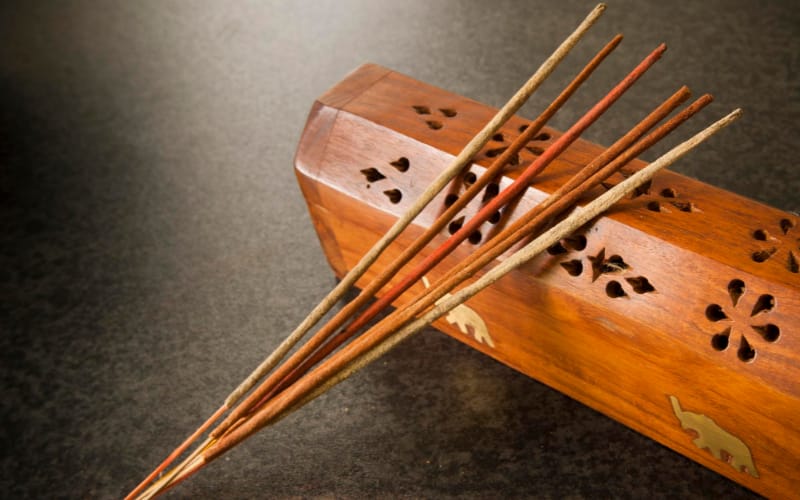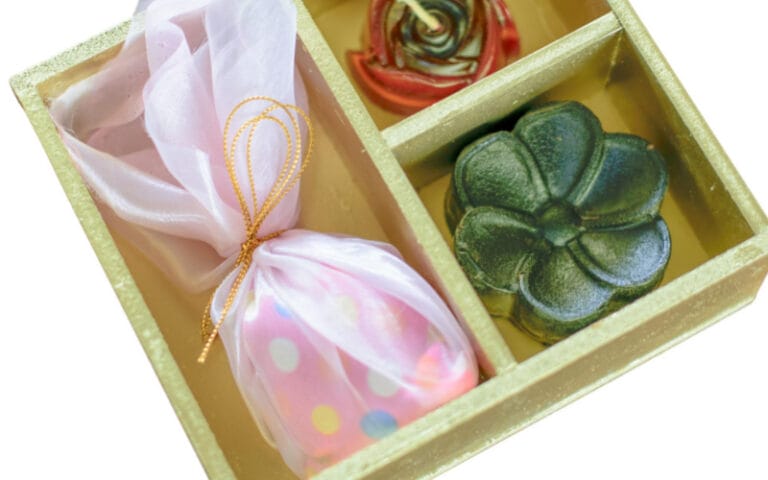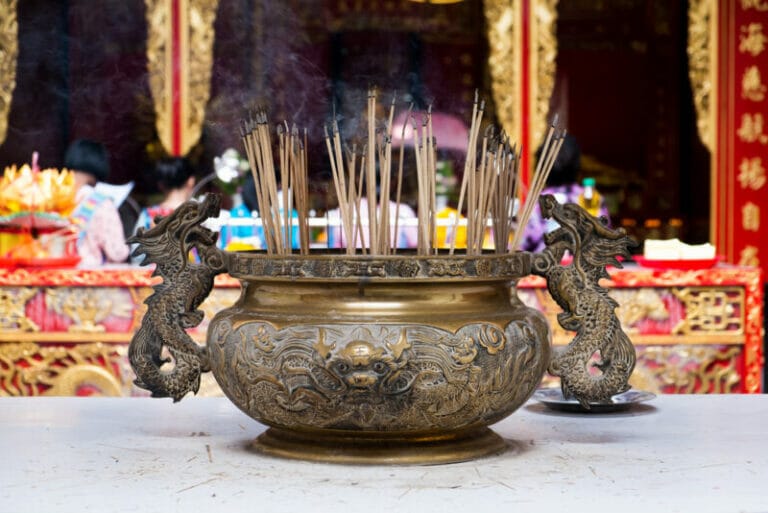Effective Methods for Storing Incense Safely
Incense can last for years in some forms, but not in others. In this blog post, we will look at how to store incense and incense ash properly.
Incense, as with many other kinds of aromatic materials, tends to lose its scent over time. This is why, if you use incense frequently, it’s important to know how to keep it fresh for a long time.
Best Way to Store Incense
When it comes to storing incense, there are a few things you need to take into account in order to make sure it keeps its scent for as long as possible.
For starters, avoid storing them in direct sunlight or in an area where there is a lot of heat. This will cause the incense sticks to dry out and the scent to fade quicker. Instead, store them in a cool, dry place.
Incense should not be stored in the refrigerator because it can become moist and lose its scent.
Another tip is to store them in an airtight container. This will help to keep the sticks from drying out and the scent from escaping.
Japanese Paulownia boxes are a great option because they’re made of a wood that expands in humid conditions, creating an airtight seal that protects your incense from moisture and degradation. Plus, the natural beauty of these boxes makes them a nice way to display your collection.
Many people opt for plastic bags. However, this is not the best idea. The chemicals in the oils and plastic can affect one another, and this can lead to a loss of potency in the incense.
If you must store it in a plastic bag, remove the incense from the original packaging and wrap them in wax paper or regular paper.
Note: when it comes to incense, the packaging can be just as important as the product inside. With proper packaging, incense can last for many years.
Quality incense is often packaged in a way that helps to keep it fresh. So, when possible, keep them in their original packaging.
One of the best ways to store incense is in wax paper, craft paper, or a cotton fabric wrapping. This will protect the incense from coming into contact with direct light, humidity, and temperature.
However, there are pros and cons to wrapping them in paper. On one hand, the paper may absorb some of the scented oils from the incense over time.
On the other hand, one of the main benefits is that it helps to keep the incense fresh. This is because paper is porous, allowing it to breathe while still trapping in the fragrance.
Plus, paper is relatively inexpensive and easy to find. Wrapping incense in paper also helps to protect it from damage.
A zip-lock bag is a great option if you want to be able to store your cones or resin blocks in a small space. They are also easy to transport if you need to take them with you on the go.
If you have a traditional incense burner, you can also use that to store your cones. These burners usually have a bowl or tray that you can place your cones or blocks in, and they often come with a cover to help keep the smoke contained.
Be sure to keep the lid on so that the cones don’t get too much air and dry out.
What is the Shelf Life of Incense?
With proper care and storage, your incense should be able to last for many years.
The most important factor in determining the shelf life of incense is the quality of the incense. Cheaper varieties of incense are more likely to degrade after 1-2 years, while higher quality incense can be stored for much longer periods of time.
Another important factor is the type of incense. Incense with less oils are less volatile over time and thus have a longer shelf life.
It’s best to choose high quality Japanese or Tibetan incense if you want to store your incense for a long time.
Here, it is important to note that there are many different types of incense, each with their own unique lifespan.
One of the longest lasting types of incense are resin. These are made from a variety of materials, including bark roots or wood of trees, sap, shrubs and plants.
Resin incense is very popular due to its strong, long-lasting scent. Resin blocks or cones can last for years if stored in a cool, dry place out of direct sunlight.
Smudge sticks, sachets, and powders are much more delicate than resin incense and don’t last nearly as long.
In general, incense should be used within 1-2 years of purchase for best results.
Can You Leave Incense Out?
You can but you should not.
If you love the smell of incense, you’ll want to make sure it stays potent. That means storing it in a way that won’t allow other strong-smelling items to alter its scent.
Keep incense in a cool, dry place. Heat and moisture can change the composition of the incense, making it less potent.
It is best to keep it in a dark drawer that prevents contact with humidity or sunlight.
Store incense in an airtight container. This will protect it from outside smells and keep the scent concentrated.
Be careful what you store incense with. Avoid storing it with strong-smelling herbs or spices, as these can transfer their scent to the incense.
With proper storage, your incense should retain its scent for a long time. Enjoy the wonderful aroma of your favorite incense, and don’t let anything ruin it!
How to Store Incense Sticks
When you buy a pack of incense sticks, you expect them to be fresh and full of scent.
But sometimes, when you open up the pack, you find that the incense sticks have dried out and lost their scent. It’s disappointing, especially if you were looking forward to using them.
There are a few reasons why this can happen. Sometimes, the incense sticks are old and have been sitting on the shelf for a while. Or, they may not have been stored properly and the air has dried them out.
There are a variety of incense sticks, including those that are made of natural and raw compounds as well as those that are doused with fragrance oils.
The latter are more common, but the former are often seen as being of a higher quality.
Incense sticks dipped in fragrance oil will inevitably dry out over time, reducing the strength of the smell.
However, some types of incense sticks actually smell better with age. This is because the raw compounds used in their production can develop more complex aromas over time.
Natural and raw incense sticks are generally more expensive than those made with fragrance oils. This is because they are more difficult to produce and require a higher level of skill.
Many people would agree that they are worth the extra cost.
Storing incense sticks in test tubes is a good way to keep it fresh, as long as the tube is big enough to fit the roll and long enough for the sticks.
If they’re too long, you can snap them in half to fit. Once all of the sticks are in the test tubes, seal them with the stoppers.
How to Store Incense Cones
For incense cones to last as long as possible, you should keep a few things in mind.
First and foremost, try to keep your incense cones away from direct sunlight and dampness, as both of these can cause them to degrade.
Store the incense in a cool, dry place. Additionally, avoid vacuum sealing the incense, as this can make the scent weaker.
Finally, don’t refrigerate the incense, as the cold temperature can also affect the scent.
By following these simple tips, you can ensure that your incense will stay fresh and fragrant for as long as possible.
With proper care, your incense should remain potent for many years to come.
Here are some tips on where not to store incense cones:
Mothballs: Incense will absorb the smell of mothballs, so it’s best to keep them stored separately.
Cedar-blocks: These also emit a strong scent that can alter the fragrance of your incense over time.
Sachet bags: If you have any sachet bags filled with potent fragrances, it’s best to keep them away from your incense stash.
Strong-smelling wood: Using a chest or box made from a strongly-scented wood like cedar or pine for incense storage is not recommended.
How to Store Incense Resin
Resin is extremely reliable, and will probably last you a lifetime.
The best way for me to store resins is in sealed glass containers.
Plastic containers may transfer their smell to the resin over time. While resins stored in plastic containers may still remain fresh, I don’t think it’s worth the risk of odor transfer.
I have been using resins for a very long time, and in my experience, they can last much longer than most herb incense.
However, you should be aware that the scent of resin will change slightly over time if you keep it in your home for a long time.
Always keep your frankincense in its own container because it has a tendency to absorb the scent of whatever it is placed near.
In the case of herbs, whole, denser materials, such as roots, will last for years, whereas powdered materials, such as leaves or flowers, will lose their scent in a short time.
How to Store Incense Ash
The easiest way to do this would be to use a suitable incense burner. There are several types of incense burners that catch most of the ash.
Incense can be burned in a traditional censer, a Tibetan lattice, or some other kind of container, depending on what kind of incense you burn.
When it comes to ashes, using a vase or bowl makes it super easy too. You won’t have them falling everywhere and causing a mess.
Fill a bowl with sand, preferably thin sand. Make sure the bowl is big enough in circumference to catch all the ash from the incense.
Toss wooden sticks left behind by the bamboo sticks into the sand and swirl the ashes around together so they become one.
If the sand gets gross, throw it out, wash out the pot, and reload it with fresh sand.
How to Store Japanese Incense
Japanese incense sticks are one of the famous forms with their rare components and particular aroma. However, to enjoy them fully with the same fragrance every time, you need to store them properly because of their sensitive nature. Here are some of the general guidelines for maintaining the durability of such expensive incense sticks:
Preference for Original Packaging
Use the original packaging for storing them as the manufacturers always utilize the right container or boxes like kiri wood boxes. You don’t have to worry about any other packaging needs as the original one is enough to protect against external factors like humidity, air, light, etc.
Proper Storage Place
Choose an air-conditioned place to keep the box of these incense and where there is no direct light source. A drawer is a good option for these qualities. Try to choose a drawer which is at ground level where the flow of air is good.
Avoid Other Aromatic Things
Japanese incense ticks have their own particular aroma and they are sensitive to other aromatic things. You need to avoid placing them in close connection. Different fragrances stored in a single place affect each other’s aroma with cross-contamination. So never place boxes of different sticks in a single drawer or place. Even you need to choose non-fragrant boxes for keeping these sticks. Like Cedar wood boxes are a bad choice for keeping the incense as this wood has its own particular fragrance.
General Guidelines for Storage Various Incense Forms
We have mentioned all the incense forms and their specific storage instructions. Here, we are summarizing all the general precautions or instructions that keep your incense durable and fresh with its particular aroma.
Storage Place Instructions
The first thing that you need to decide is the location where you will store your incense. Why does place matter a lot? Environmental factors like air, light, moisture, etc are some of the reasons that make incense useless even before the expiry date. Here is the list of important instructions before you finalize any specific place in your home for keeping your incense stock:
- Choose a place that is dark with a low-temperature level. Both direct lights and high temperatures are harmful to incense as they reduce the scent or durability. Places like drawers or cupboards offer protection against hot temperatures and light so you can consider them.
- Choose a place where you can keep the packaging in a vertical position. Why? This way, incense sticks remain organized without striking each other. The integrity and strength remain the same in the standing position which helps in the smooth burning process.
- The place where you wish to store incense must be odor-free because of the natural tendency for incense to absorb surrounding aromas. This thing can affect their fragrance and make them unpleasant during burning. Also, keep aromatic things away from that place too like spices or scented candles to prevent cross-contamination, etc.
- Never use humid places like bathrooms to store them. Humidity can ruin the strength of the sticks and reduce the fragrance. Also, It is difficult to light the incense when it is affected by the surrounding moisture.
- You can book a separate stand or storage cabins for placing all your incense boxes. Such dedicated sites increase the aesthetics of your home and also make it easy for you to choose the right one according to your requirements
Packaging Instructions
After deciding the location for storage, the next important thing to decide is the packaging of the incense.
Whether you want to store these fragrant products for personal use or you want to share them with your friends for gifting purposes, packaging is crucial. The wrapping not only increases the aesthetics but also serves an important role in providing protection against harmful elements. Let’s see what instructions you need to follow while deciding on the packaging solution for your incense:
- Use separate wrapping sheets to pack various sticks or incense in a single packaging. This additional packaging keeps them in perfect condition without breakage. Moreover, these sheets prevent collisions that can reduce the scent of the incense.
- Always use proper labels to avoid mix up of different types of incense. Also, putting the name on each packaging solution helps you get the right type of fragrance without opening every single box.
- If you are planning to store incense for an extended period of time then try sealable bags that protect against humidity. Such air-tight pouches do not let the air enter inside. This way, incense remains fresh for a longer span. Make sure to squeeze out all the air before closing the bag after placing incense inside.
- Use inserts or dividers for storing various types of incense in a single package. Try to use different boxes for multiple incense forms. However, if you have space issues then you can use a single box with the help of dividers only.
Remember that different types of incense have different scents. Keeping them in a single packaging may reduce their own fragrances and can result in a new yet unpleasant smell. So, it is not a healthy practice to keep various types of fragrant products in a single box or container.
How to Keep Incense Fresh
Keeping incense fresh is easier when it is kept in a holder or burner rather than an ashtray where it can dry out and become more difficult to burn.
There are other instructions that keep them fresh without reduction or alteration in their fragrance.
Instructions for Maintenance
The primary purpose behind using incense sticks, cones, resins, etc is to get mental and physical benefits. These products make your mind relax and help you have better concentration during meditation with their pleasant aroma. However, to keep these products durable in terms of quality or fragrance you need to follow these things
- Always handle the incense with care. Do not exert pressure on them and grab them with gentle hands. If you don’t handle them with care, the chances of breakage are high because of their stiff yet sensitive texture.
- Use old stock first. Always label the manufacturing date or purchase date to use the old pieces first. Every incense comes with an expiry date and you need to utilize it within that period. Otherwise, you will not get quality fragrance.
These two simple steps give you consistent results in terms of aroma quality and quantity..
Bottom Line
We have mentioned all the storage guidelines that assist in maintaining the quality of incense over the long run You will have a mesmerizing experience every time you burn your incense by implementing all the instructions
And as a final note, let me remind you again that when properly stored, incense can remain potent for several years, especially when stored away from humidity, heat, light, or other scents.







